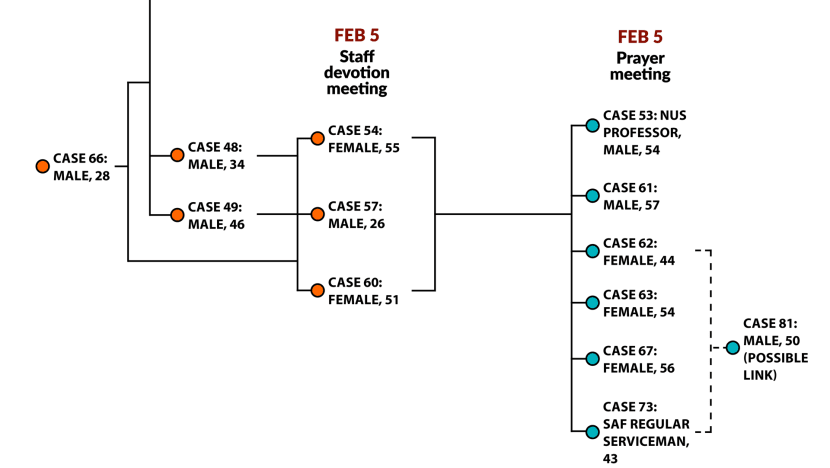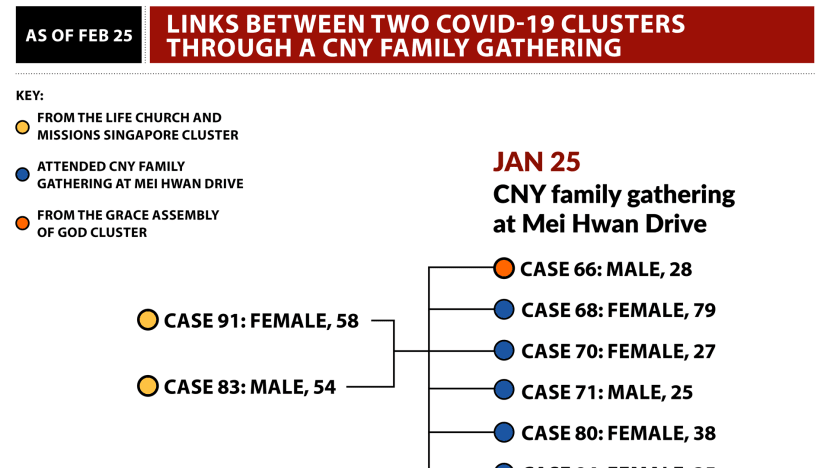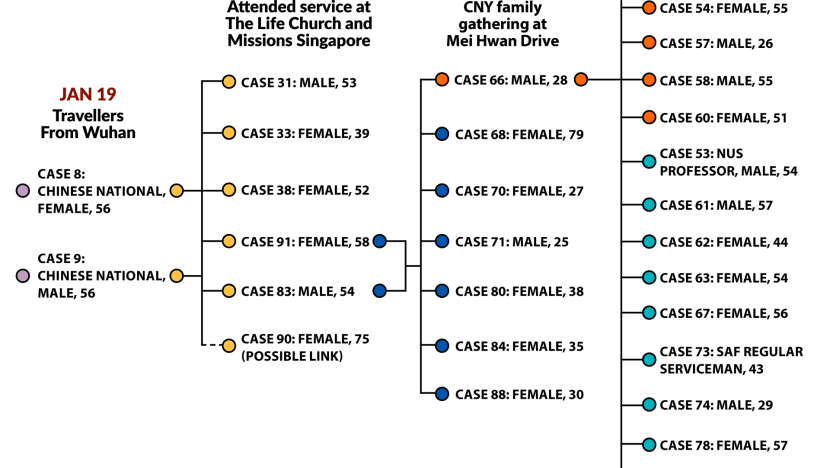Chinese New Year gathering identified as missing link between COVID-19 church clusters

The Grace Assembly of God church. (File photo: TODAY/Yong Jun Yuan)
SINGAPORE: A married couple who went to a Chinese New Year gathering at Mei Hwan Drive is the missing link between the COVID-19 clusters at The Life Church and Missions church and Grace Assembly of God church, the Ministry of Health (MOH) said on Tuesday (Feb 25).
The couple, cases 83 and 91, went to the gathering on Jan 25. Case 91 was the only new case reported in Singapore on Tuesday.
PRIMARY CASE AT GRACE ASSEMBLY OF GOD
The health ministry determined on Tuesday that case 66 – a 28-year-old Singaporean man who works at the Grace Assembly of God and lives at Mei Hwan Drive – was the primary case of the church cluster.
He had gone to work at the church while symptomatic and on Jan 29, became the first to report symptoms in the cluster.
Sixteen cases in the church were subsequently infected with COVID-19, said MOH, adding that some of these cases had been exposed to case 66 at a staff meeting in the church's Tanglin branch (355 Tanglin Road).

The Health Minister on how the missing link between clusters was found:
“To determine how case 66 had been infected, we investigated the locations he had visited and people he had close contact with,” MOH said in a press release.
Case 66 attended the Chinese New Year gathering at Mei Hwan Drive on Jan 25 with the married couple, cases 83 and 91.

Investigations showed the married couple had earlier visited The Life Church and Missions on Jan 19, the same day as cases 8 and 9. Cases 8 and 9 are Chinese nationals from Wuhan who tested positive for COVID-19 in late January.
READ: 5 more COVID-19 patients discharged in Singapore, 1 new confirmed case: MOH
READ: Singapore to bar visitors with recent travel history to South Korea's COVID-19 outbreak epicentres Daegu and Cheongdo
Cases 83 and 91 were both "not sick" and had no symptoms at the time of the investigations.
However, records showed that case 91 had gone to Sengkang General Hospital the day after the gathering with symptoms consistent with COVID-19. Case 83 had also been unwell end-January, and repeatedly sought treatment at a GP clinic.
“This meant that cases 83 and 91 likely got infected from case 8 and 9, and went on to pass the infection to case 66 at the Chinese New Year gathering,” MOH said.
Case 91 recovered sometime between Jan 26 and Feb 18, without having been hospitalised for COVID-19.

The MOH epidemiology team arranged for cases 83 and 91 to be tested at the National Centre for Infectious Diseases, including the use of serological tests developed by the Duke-NUS team.
Serological tests are tests that look for antibodies in blood samples.
"The test results confirmed they had earlier been infected with COVID-19," MOH said.
The link was established with the help of the Singapore Police Force, MOH said, adding that the work involved extensive analysis of the activity maps of the confirmed cases.
Why authorities didn't detect Case 91 infection earlier:
STAY HOME WHEN UNWELL
MOH's director of medical services Kenneth Mak said that the Chinese New Year gathering "was a very important event" where someone was "infected, unwell but then continuing to engage in social activities and therefore causing" the spread of the coronavirus.
"This in fact emphasises the reason why we have been advising that if you are not well, you should stay at home, you should not engage in social interactions, going out, because that risk of spread remains," he added.
READ: What we know about the patients who have fully recovered
READ: Coronavirus cases in Singapore - Trends, clusters and key numbers to watch
COVID-19 has spread to more than 30 countries and territories, including in Singapore, Japan, South Korea and Thailand.
South Korea has been the hardest hit outside of China, with a total of 893 cases as of Tuesday. Eight people have died from the virus.
Last week, the World Health Organization (WHO) said it was "very impressed" with Singapore's response to the COVID-19 outbreak.
Singapore on Feb 7 raised the Disease Outbreak Response System Condition (DORSCON) to Orange, prompting additional precautionary measures.
The country has also set aside S$800 million in Budget 2020 to support frontline agencies in their efforts to contain the COVID-19 outbreak, with the bulk allocated to the Ministry of Health.
BOOKMARK THIS: Our comprehensive coverage of novel coronavirus and its developments
Download our app or subscribe to our Telegram channel for the latest updates on the coronavirus outbreak: https://cna.asia/telegram
















